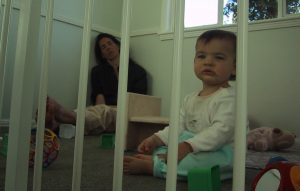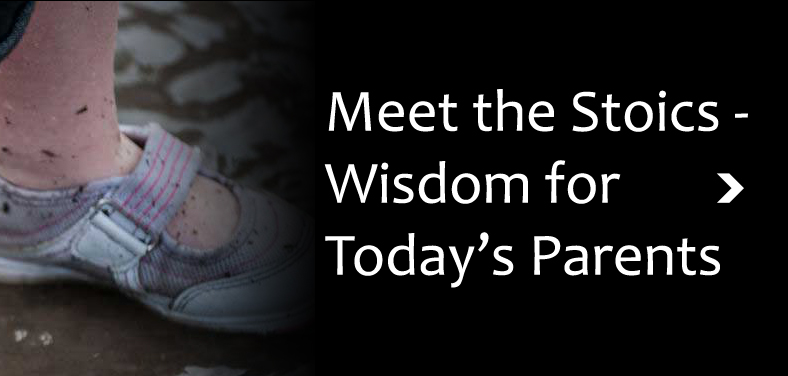Every pre-toddler needs a Free Space (or a “Safe Space” or a “Yes Space”) where they can play freely and safely without the need for interruption. This post has some hints on setting it up, and using it.
Universal Tip #1 – set things up in advance of need
This is true whether looking at big or small issues: pack for the park while they’re napping; ask parents of slightly older kids what they are dealing with now; and work on Big Things, like changing where you live, etc, by making steady progress on a series of steps. The time of need will arrive before you know it. And this need, setting up a Free Space for your child in your home, is one of those many cases where “Last month would have been better, but doing it today is fine” – that’s okay – just do as soon as you can.
Where
Pick a good corner – you know what you’ve got. It’s nice if the space is close enough to the action so the child can get your attention when they need it – but in some cases direct line of sight can take away from the desired independence.

Of course, it depends on what you have available. We live in a one-bedroom apartment, and the idea of carving out a “new” area that was just the baby’s felt like a loss. It worked great, however – that 20% of our floor space became exclusively hers, where she could play uninterrupted, while the rest of apartment remained stuffed with … our stuff. (And the changing table, crib, boxes of hand-me-downs, etc).
Ideally you would love to start with a space as big as your bed – and one that could grow to twice that size, or bigger, if needed. Natural light, please – we’ve got to support those circadian rhythms.
If you live in a full-sized house, you might want to resist the temptation to set up the child’s special space “in their room” or on a different floor. As always, we want the child to be independent, and to be able to interact with their adults when they want to.
What
- Buy baby (or pet) fencing sections – new, used, whatever. You can fake it with furniture, to an extent, but I recommend at least getting a proper gate, so your child can (eventually) move in and out under their own power. At some point, they will be able to open the gate … and go in on their own. (They will want to be there – wanting to be with their familiar things in a space they can control after, for example, an exciting trip to the store and the playground.)

The “Fake it With Furniture” method. - Put down a floor cover – like a mat, for at least part of it, or maybe a sheet. Maybe an old bed cover that is easy to clean.
- Add some cushions for both adults and kid, a few toys. You can rotate what’s in there every few days. As always, no toys with batteries, and no need for bright primary colored mats with the alphabet on them – what’s

The Wading Pool – I don’t like that you can’t see out … but it works the point?
- Get in there, put your eyes at kid eye level, and see what you see: Is it attractive, stimulating, and comfortable? Is there anything potentially dangerous in reach? Is there a good variety of toys without too much clutter? It’s good to have a book or two, things to climb on, things to cuddle with, things to manipulate. Is there a place to hide things? Are there cool, interesting things to explore, space for some “big body play,” and a potential quiet/comfort area?
- Look at it from Kid’s eye view – is everything potentially harmful or annoying in reach
- Figure out where visiting adults will sit – it’s gotta be visitor-friendly.
When
- Start Early. Getting them acclimated to being in their space sooner is easier on everyone – so, you want to start just as they are pulling themselves along, or before, if you can.
- Start small. A mobile child who might feel limited by the confirms of their free space can start with visits of a fraction of an hour that can grow longer – in time, they we’ll recognize the advantages of being alone, and in charge, in their own space.

An Adult visits the Free Space – and finds it quite relaxing - Sit with your child in their Free Space. As with any other movements – share your intentions in advance, whether entering or leaving. Leave your phone (and your cares, and your adult agenda) outside the Free Space. Read a book, nap, be climbed on. You don’t need to correct or direct – just Want Nothing. Enjoy!




Add comment